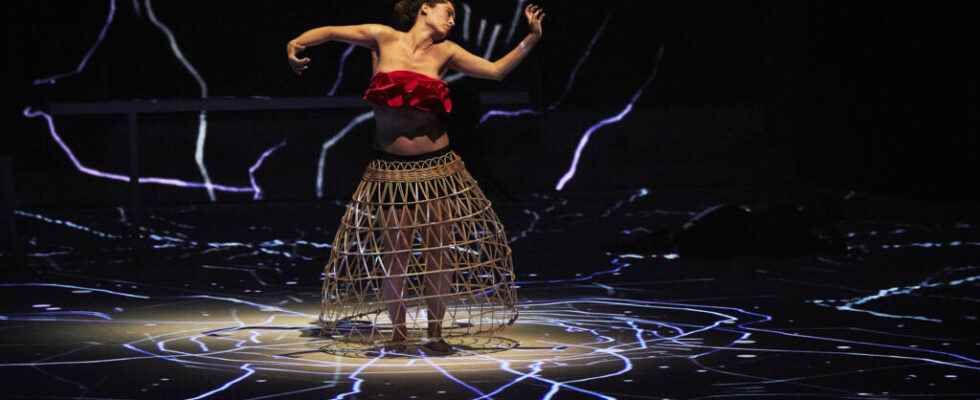Rocío Molina, flamenco dance prodigy, presented the second part of his trilogy at the Maison de la Danse in Lyon, as part of a long tour until the end of next year between France and Spain. She revisits the fundamentals of traditional Spanish dance and makes it her own, accompanied by two virtuoso guitarists.
Slightly round, not large. Apparently, nothing predestined Rocío Molina to become this great dancer that the biggest stages in the world tear off. And yet, when she enters the set, the room is electrified.
The body compact, powerful and graceful at the same time, the movement alternately undulating and energetic, the dancer magnetizes. After a first part of her trilogy dedicated to ecstasy, she presents here a second darker part in a free flamenco where she travels without ever letting herself be locked up.
” What haunted me in this show is a person and their reflection. It got me interested in the idea of the mirror, the concept of the mirror, and I pictured in my head a black lake. And the figure of a woman in this black lake. »
Being in tune with your own body
And the lake, or rather the sea, invades the plateau between light and darkness. Sumptuous scenography in which the dancer wrapped in a long black dress is reflected, dark and reborn.
” It must be taken into account that this piece reflects the strongest crisis of creativity in my life and career. It corresponds to my motherhood. I had just given birth and was breastfeeding my daughter. So this corresponds to a period when my body as a woman was particularly stressed. »
And in this rather classic piece, Rocío Molina explores the purity of flamenco and its roots, while making it his own with his own energy.
” I do not claim to leave the tradition of flamenco. On the contrary, I like tradition more and more. I just try to follow my body and I want it to be free to do what I need on stage. »
Free, Rocío Molina is unquestionably so to the extreme. And if the gesture draws from the origins of flamenco, she also knows how to capture in her own way the passion and madness of this ancestral dance.
